It is common for people to become fascinated with animals and seek to keep them as pets. However, this can often be unsuitable for the animal involved. One example of this is with birds, who are often trapped and sold in the exotic pet trade due to their beauty and allure.

The act of capturing birds from the wild for the pet trade not only harms the birds but also disturbs the ecosystem they belong to. The survival rate of parrots captured for the pet trade is estimated to be only 1 in 6. Other bird species also face similar challenges. However, there are individuals who strive to breed and safeguard endangered bird species. These individuals release the birds into their natural habitats to rejuvenate dwindling populations or to help them adapt to new environments where they can flourish.
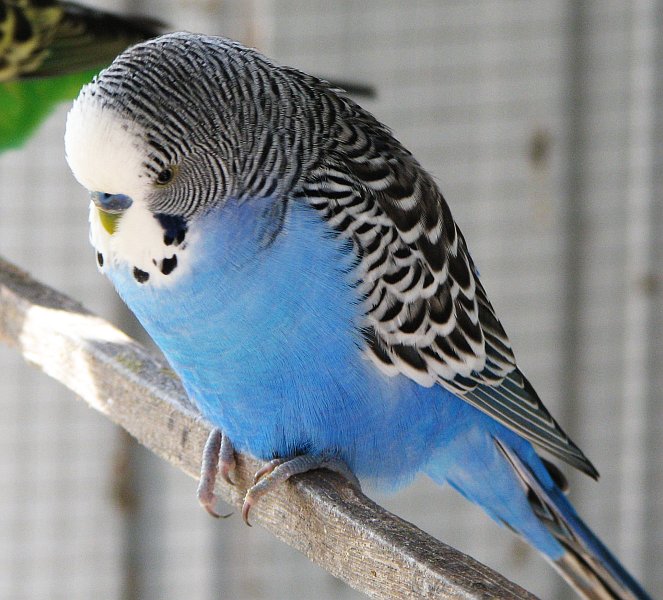
The violet budgerigar mutation is just one of the many mutations that can change the color of a budgerigar’s feathers. Specifically, it’s a part of the violet variety, which can alter a bird’s appearance depending on whether it’s a single or double factor and whether dark and blue mutations are also present. While there are 18 different combinations of these mutations, only a few of them meet the exhibition standard for a true violet color. Budgerigars, also known as budgies or parakeets, are a popular choice for pets due to their ease of care and friendly nature. They’re small and low-maintenance, making them ideal for those with busy schedules or limited living space, such as apartment dwellers. Not only are they affectionate and sociable, but they can also be trained to talk and do tricks.
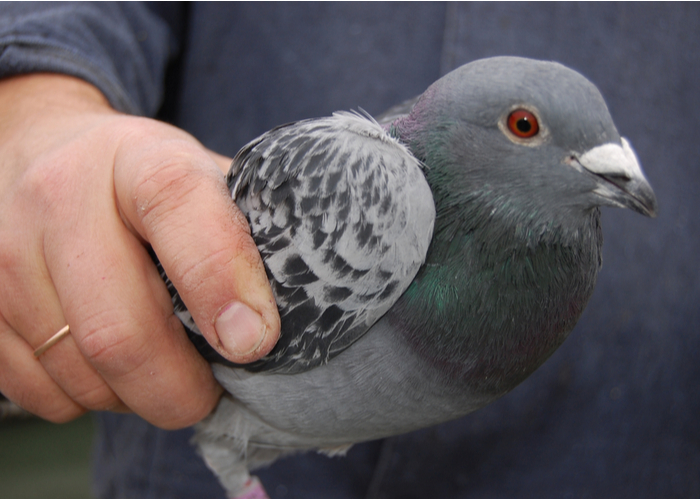
The dove is often overlooked as a friendly pet bird, but they are actually very docile and affectionate. These birds are easy to tame and rarely display any aggressive behavior or biting tendencies. Training your dove should also be a breeze, and they will appreciate the attention you give them without requiring as much as other species.
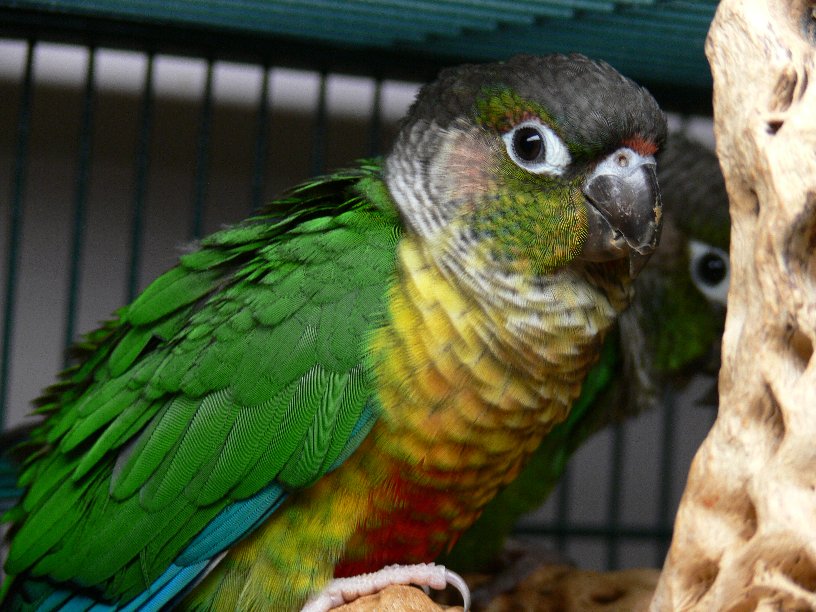
The Green-Cheeked Conure is a type of conure that hails from South America. Known for their friendly and docile nature, these birds are among the most social members of the conure family. They are playful, curious, intelligent, and can be quite mischievous at times. Despite this, they are also very easy to get along with and love nothing more than receiving affection from their owners. While they are not known for their ability to talk, there are rare exceptions. Regardless, they are incredibly charming and make wonderful pets for those seeking a friendly avian companion.
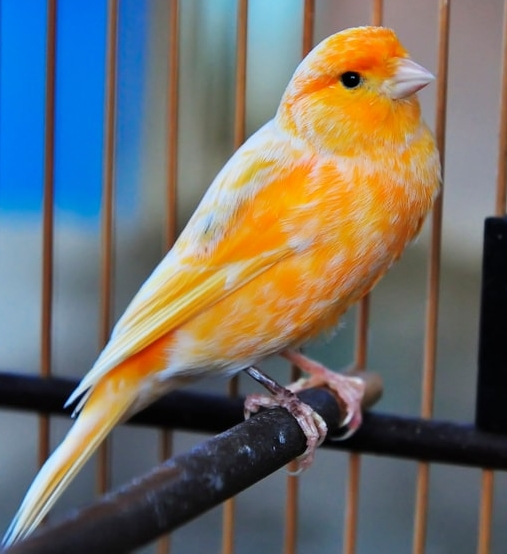
For those looking to house a Canary, it is recommended to invest in a cage that is at least 2 to 3 feet tall to provide ample space for the bird to fly around. When setting up the cage, it’s best to position perches at various heights and place a few bowls for water (one for drinking and a larger, shallow one for bathing) and food inside. Canaries can be fed commercial pellets along with vegetables such as kale, spinach, and sweet potatoes for added nutrition. These birds do not necessarily require companionship from other feathered friends, but they do enjoy being in the same room as their owners and respond well to human interaction.
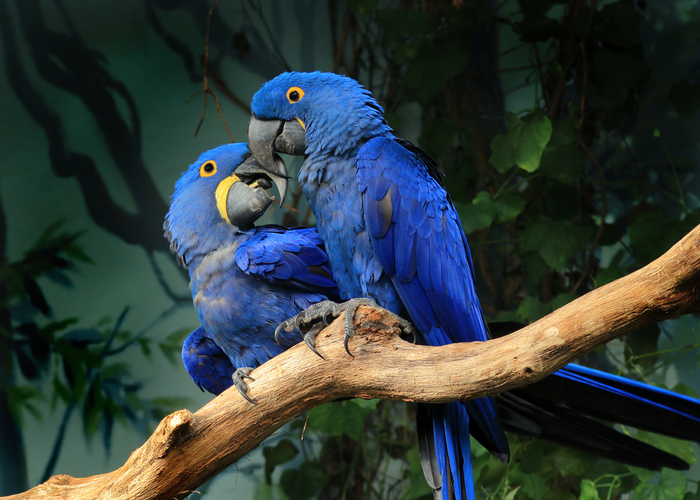
Hyacinth Macaws are among the most magnificent and largest birds that one can raise. These birds are known for their friendly and sociable nature, and they love to cuddle with their owners. However, due to their size, which can range from 42-51 ounces and over 40 inches in length, adequate space is required to accommodate them fully. If you can provide them with enough room, you’ll be rewarded with the friendliest giant birds.
Owls may not be your first choice when it comes to selecting pet birds, but after reading this article, you should reconsider. Although finding owls may be challenging in certain locations, if you have the opportunity to raise them, you should take it. Owls have big, beautiful eyes and are known to be loyal and good-natured. People who raise owls typically possess rehabilitation licenses, which enable them to care for injured owls. If you have the patience and time to interact with owls regularly and train them, they can become friendly and affectionate towards you. Barn and snowy owls are among the best options for those looking to raise these magnificent creatures.
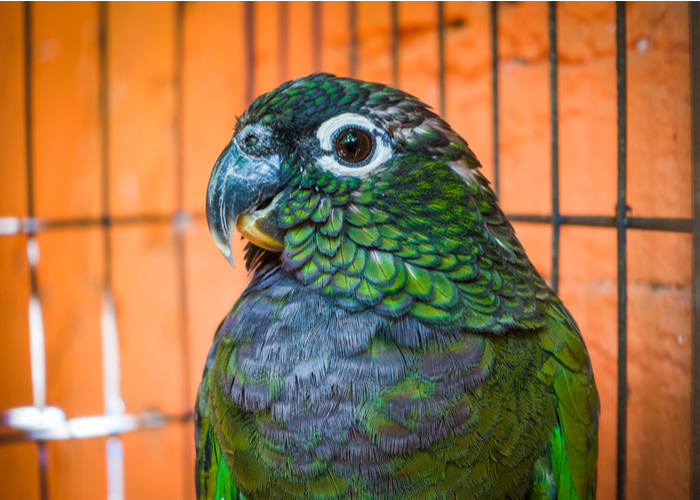
The Hahn’s Macaw is a stunning pet bird that is known for being incredibly friendly. While many people are drawn to macaws for their beauty, some are hesitant to own one due to their large size. Luckily, the Hahn’s Macaw is much smaller than other breeds, measuring only around 12-14 inches in length. Despite their small stature, these birds have big personalities and are incredibly smart and playful. With regular socialization and handling, they can be gentle and loving companions. However, it is important to note that Hahn’s Macaws can become depressed if they do not receive enough social interaction. Additionally, they can be quite noisy pets.
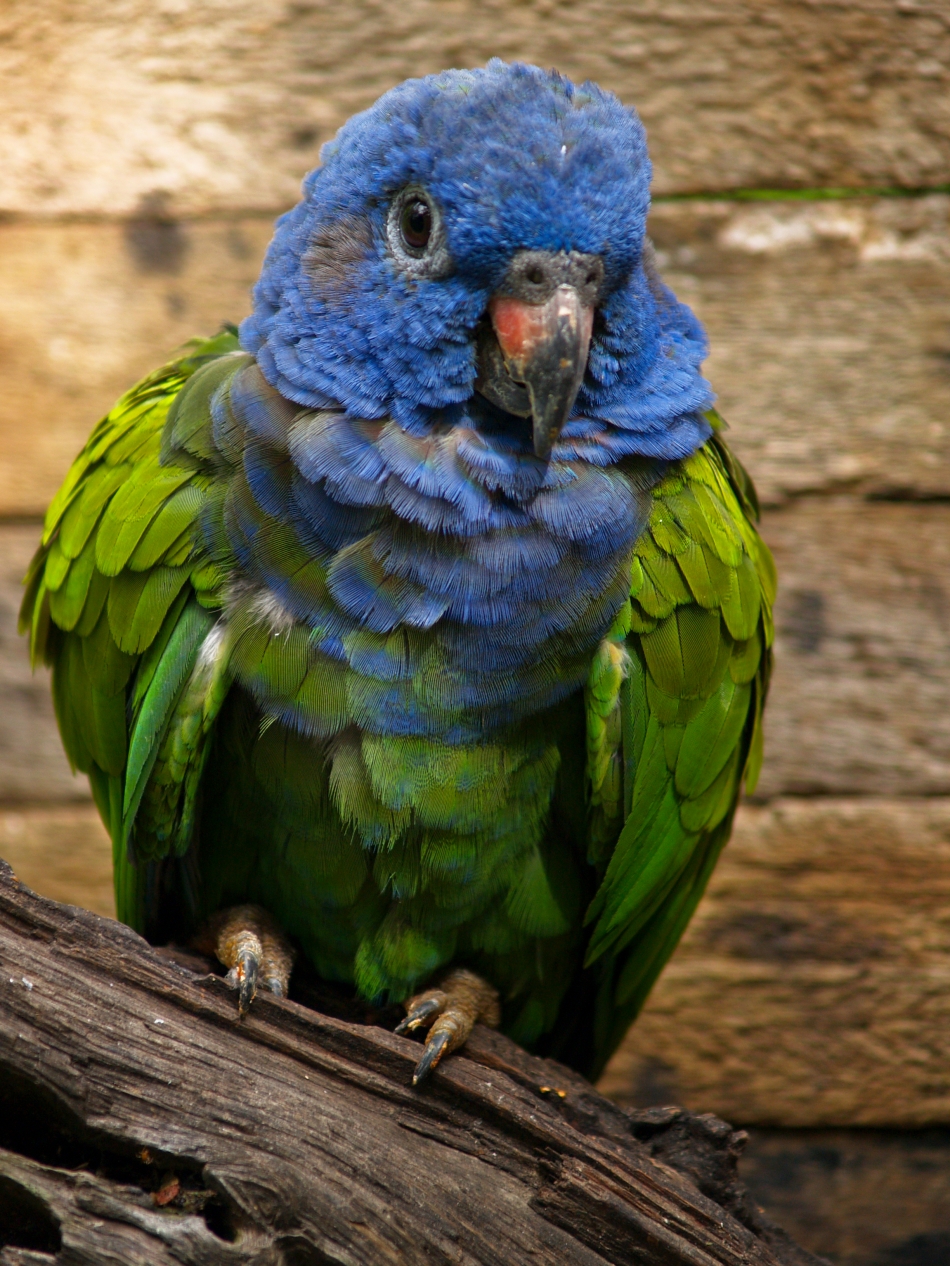
The Pionus parrot is an incredibly friendly pet bird that can make a fantastic addition to your family. They are an ideal choice if you’re looking for a long-term commitment as they have the potential to live up to 40 years! This is much longer than the average lifespan of a family dog, which is an important factor to consider before bringing one into your home.
With a length of around 10 inches, these birds love to play and interact with their owners. What’s great about them is that they don’t become overly attached to just one person in the household, but rather they bond with everyone. This is an especially important feature to keep in mind if you have multiple family members who are interested in caring for the bird.
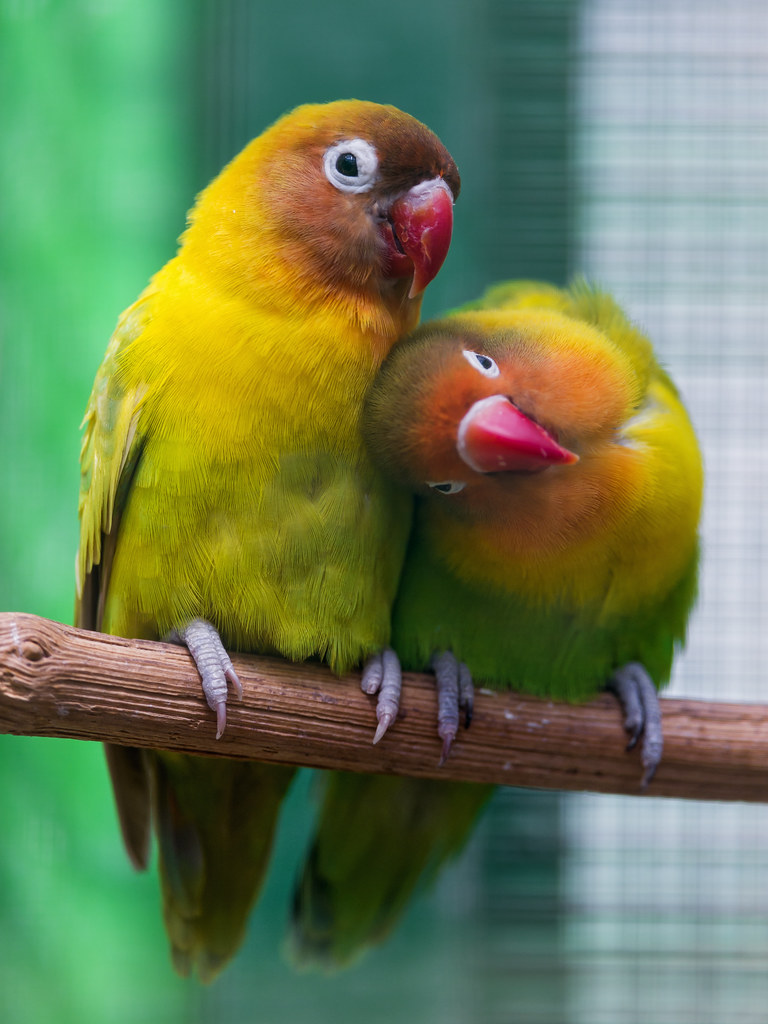
The Lovebird: The Affectionate Pet Bird
The Lovebird is one of the most affectionate and friendly pet birds you can own. With a name like that, it’s no surprise that they are known for their loving nature. Lovebirds are social creatures and can easily form strong bonds with their owners and other pets, whether they have feathers or not.
In addition to their charming personalities, Lovebirds are also known for their stunning feathers. They are relatively easy to take care of, but it’s important to remember that they need a bowl of water to bathe in a few times a week. Not only does this keep their feathers looking neat and tidy, but it also provides an opportunity for them to play and have fun.
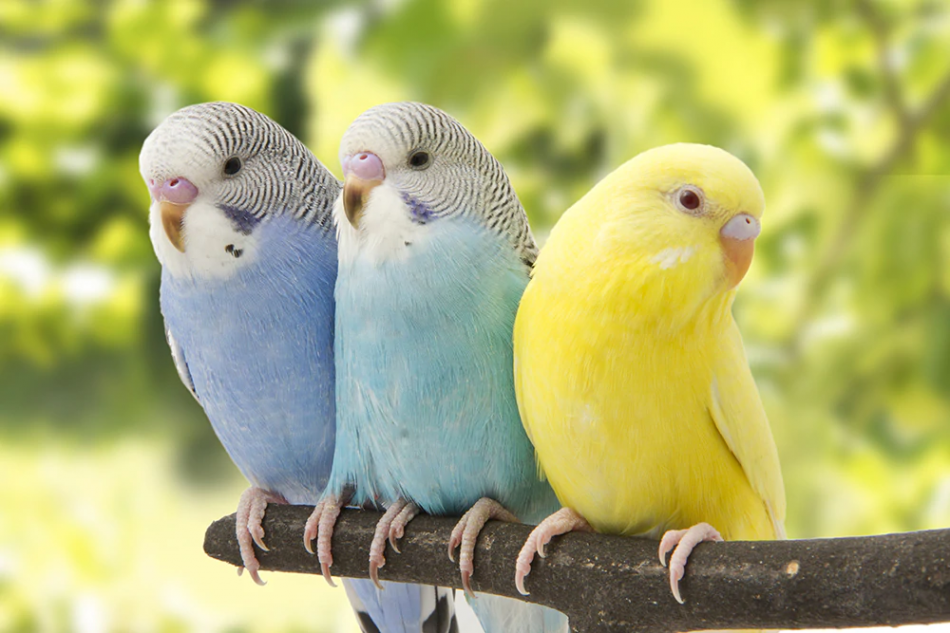
Budgerigars, also known as parakeets, are native to Australia and derive their name from the aboriginal communities living there. The term “budgie” is commonly used as a shorthand for “budgerigar”. While often referred to as parakeets, this classification actually encompasses a variety of small to medium sized parrot species. As social animals, parakeets require interaction and activity to thrive. If they are tamed and given ample attention by their human caretakers, they can form strong bonds with them. However, if humans are absent for extended periods of time, it is best to keep parakeets in the company of other parakeets to avoid depression and other mental health issues.
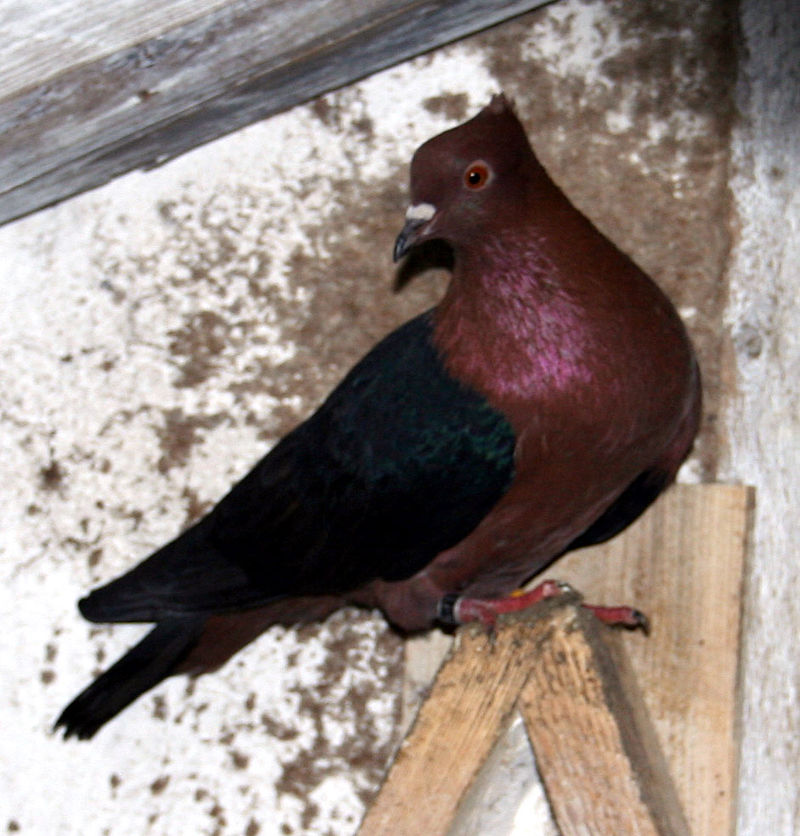
The unique appearance of the archangel pigeon is the result of selective breeding. Their bronze or gold bodies have a metallic shimmer, and their wings come in black, white, or blue. Their orange eyes add to their striking appearance. This breed is not suited for the wild and is only kept as a domestic bird. People enjoy exhibiting them in shows and keeping them as decorative pets.
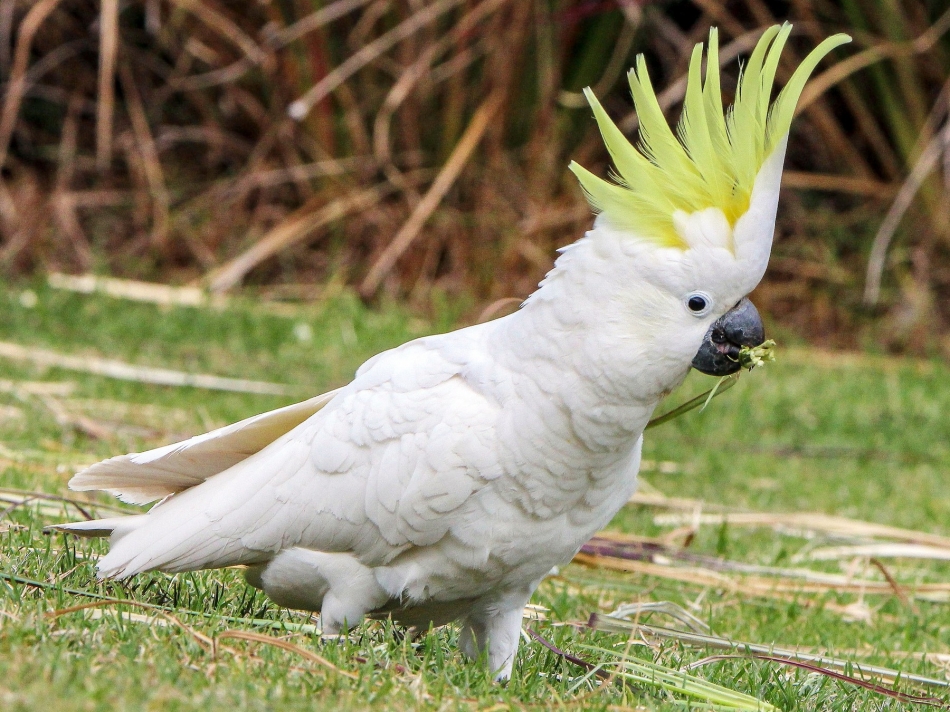
When it comes to style, cockatoos are all about being in the spotlight and receiving affection. These friendly creatures have a tendency to form strong bonds with their owners and thrive on a close relationship. In fact, if they don’t get enough attention, they can become sad and start to pluck out their feathers as a sign of distress. However, as long as cockatoos get at least an hour of love and attention each day, they’ll quickly become a beloved member of the family. In terms of their appearance, cockatoos are predominantly white with pale yellow wings and tails, as well as a large white crest and a black beak (for umbrella cockatoos).
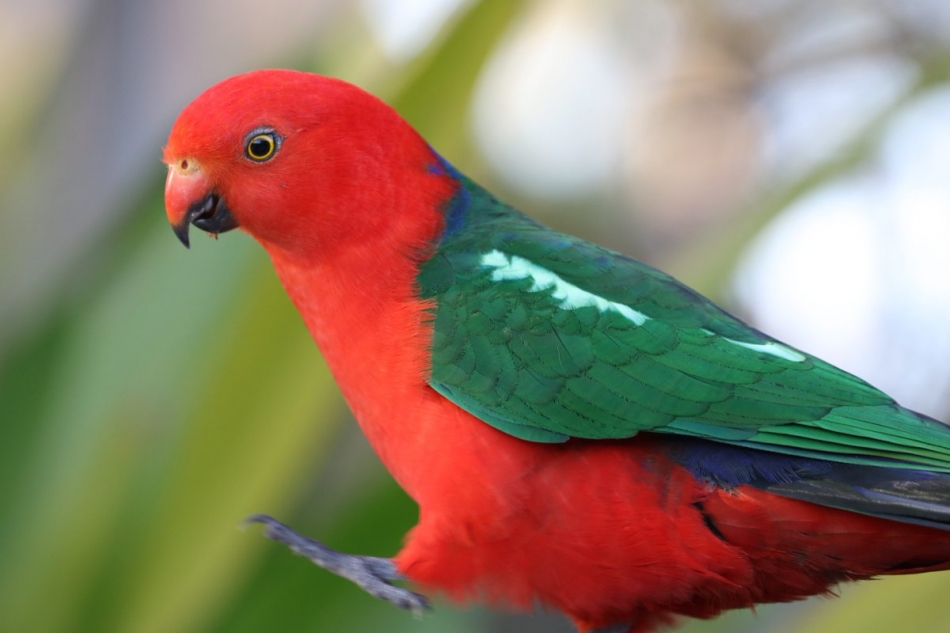
The Australian king parrot is a popular pet choice due to its stunning appearance rather than its affectionate nature or ability to be handled. The males are easily distinguishable with their bright red coloring, green wings, and black tails, while the females sport green feathers, red bellies, and legs. One of the biggest challenges of keeping them as pets is providing them with ample space to move around in. These birds are not content with small cages or limited mobility and require knowledgeable handlers to provide them with the necessary amount of space to thrive.

The black palm cockatoo is a notably large breed of cockatoo, distinguished by its dark gray to black feathers and maroon cheeks. Its distinctive feathered crest resembles palm fronds, which gives it its name. As pets, black palm cockatoos are known to be particularly demanding, with a strong social and intellectual nature. Without sufficient care and interaction, they can become depressed and destructive. Sadly, these majestic creatures have been classified as vulnerable due to the destruction of their natural habitat and the pet trade, causing a significant decrease in their population.
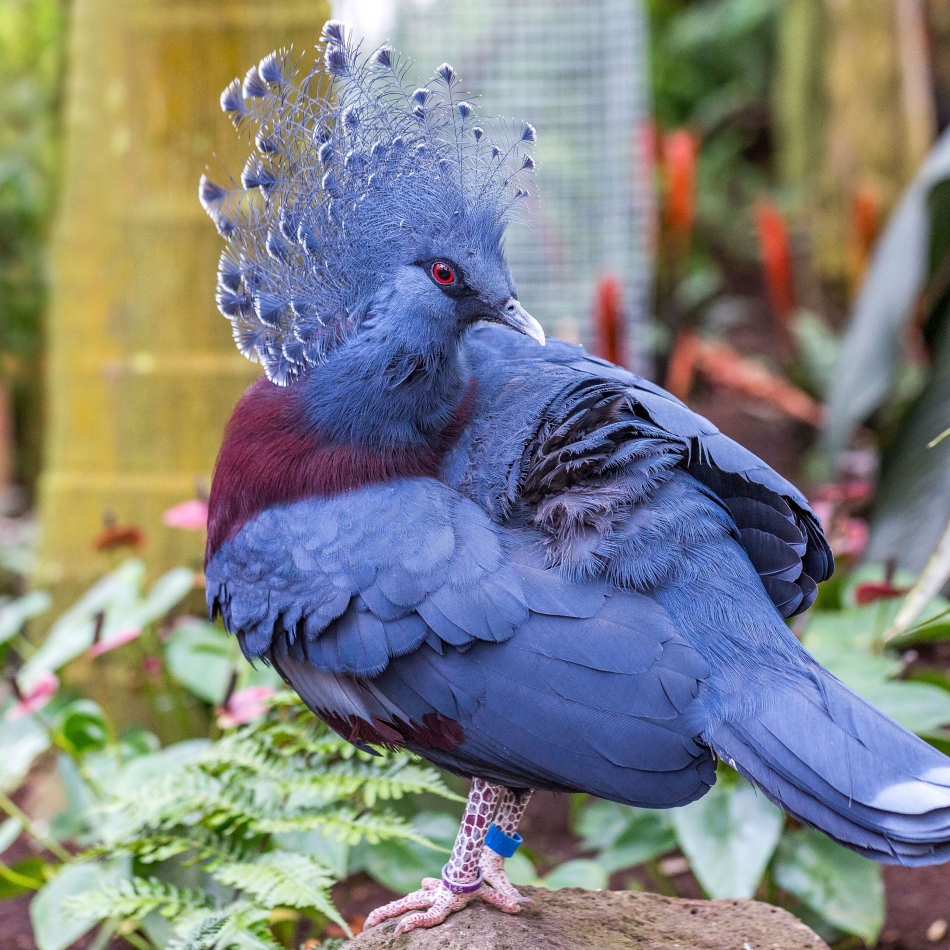
The Victoria crowned pigeon is a stunning bird that was named in honor of Queen Victoria. With their beautiful lacey blue feathers on their heads and light blue feathers on their bodies, they are truly majestic creatures. These birds are also quite large, weighing up to 7 pounds, and are the largest species of pigeon in the world. While they require a significant amount of space to run around and places to perch, it’s important to note that they are not ideal pets for your home. Instead, they are best cared for in zoos where they can receive the proper care they need.
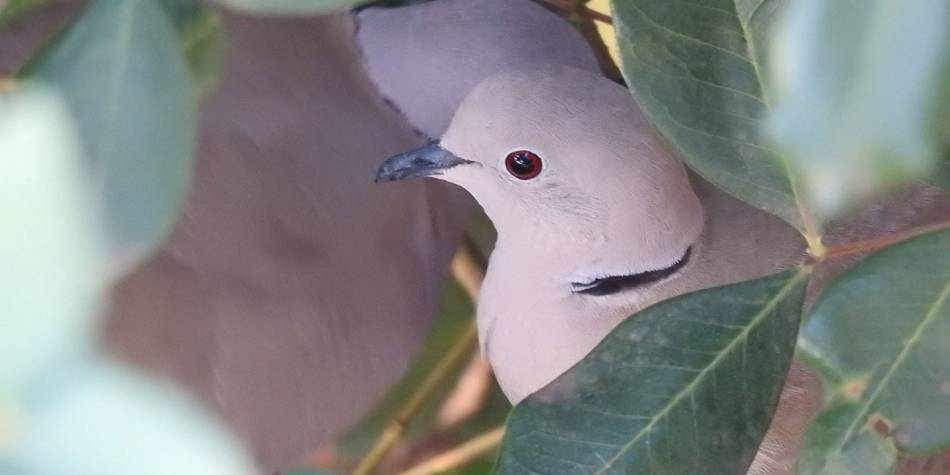
Ring-Necked Doves are not commonly kept as pets, with only 3% of bird parents opting to have them. However, these gentle and easygoing birds deserve more popularity among pet owners. While some dove species require advanced management and large, precise environments, other species such as Ring-necked doves (Streptopelia risoria) and daond doves (Geopelia cuneata) are great companion pets. These doves love spending time with their humans once they become accustomed to them. They are perfect for those who want bird pets but cannot devote much time to care for a parrot. A wide cage with several perches, bells, and swings is needed for their housing.
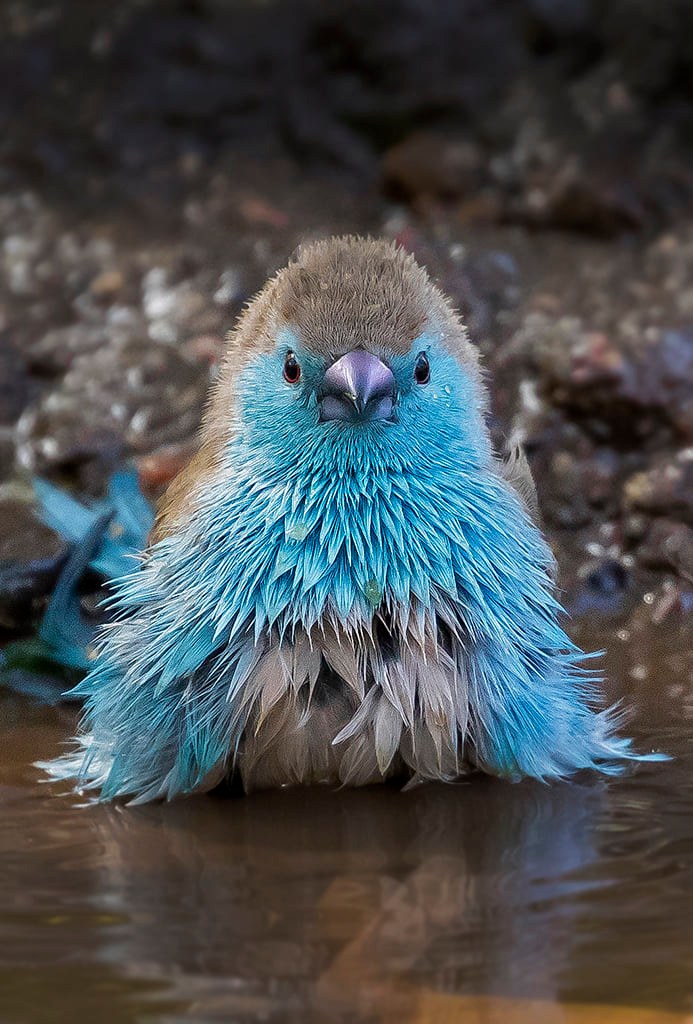
The Uraeginthus angolensis, commonly known as the blue waxbill, is a species of estrildid finch prevalent in Southern Africa. It goes by several other names, such as southern blue waxbill, blue-breasted waxbill, southern cordon-bleu, blue-cheeked cordon-bleu, blue-breasted cordon-bleu, and Angola cordon-bleu. Many people also keep them as aviary birds. Their diet primarily consists of grass seeds, which they collect from inflorescences, supplemented with termites and insects. They have been observed eating the fruit dropped from Boscia albitrunca trees. Blue waxbills are usually spotted in pairs or family groups but do join larger flocks that often include other estrildid finches.
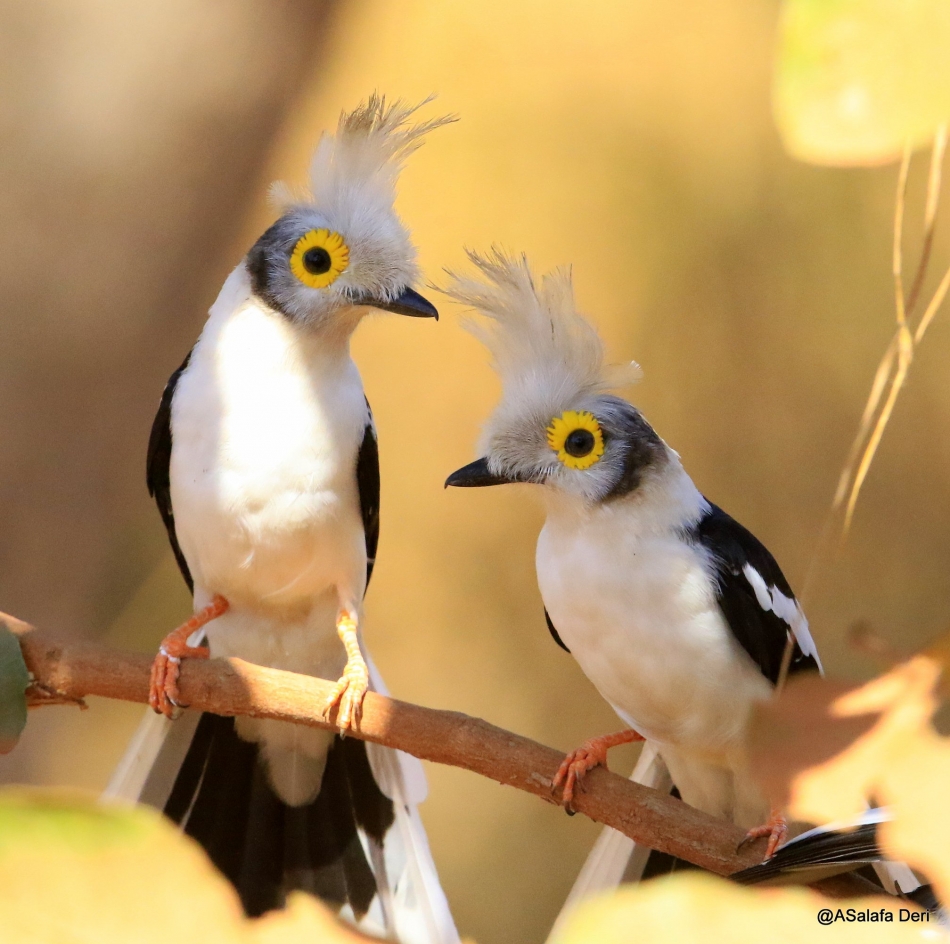
The white-crested helmetshrike, also known as the white helmetshrike, is a type of passerine bird that belongs to the Vanga family Vangidae. It was previously classified under Malaconotidae. This bird species can be found in numerous countries across Africa, including Angola, Benin, Botswana, Burkina Faso, Burundi, Cameroon, Central African Republic, Chad, Democratic Republic of the Congo, Ivory Coast, Eritrea, Eswatini, Ethiopia, Gambia, Ghana, Guinea, Guinea-Bissau, Kenya, Malawi, Mali, Mauritania, Mozambique, Namibia, Niger, Nigeria, Rwanda, Senegal, Sierra Leone, Somalia, South Africa, Sudan, Tanzania, Togo, Uganda, Zambia, and Zimbabwe. The white-crested helmetshrike prefers subtropical or tropical dry forests, dry savanna, moist savanna, and subtropical or tropical dry shrubland habitats. These birds are social and may be seen in small groups foraging on the ground or amidst foliage while chattering noisily. Check out this video for more information: https://www.youtube.com/embed/MZIQAxWQB8M
